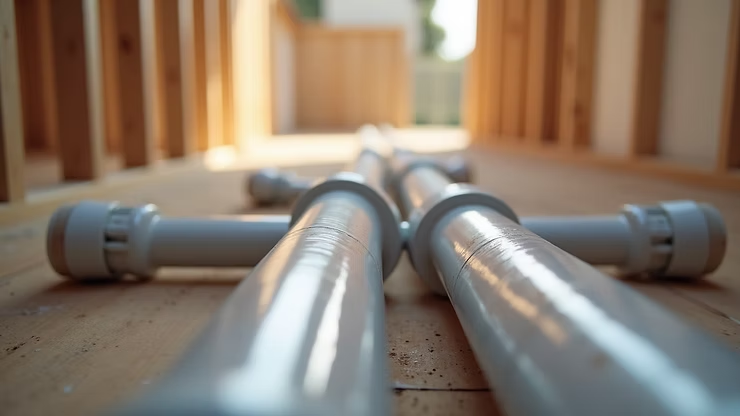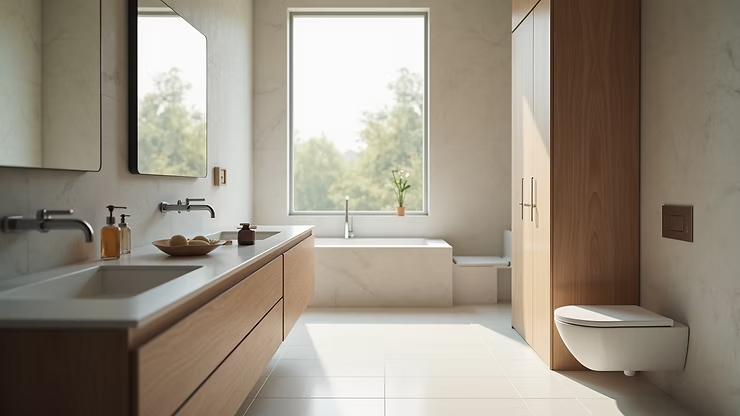Home renovations are an excellent opportunity to improve your living space. While many homeowners focus on visual changes, it’s equally important to pay attention to the plumbing. Ignoring plumbing upgrades and repairs can lead to costly problems later on. By investing in your plumbing system, you can enhance comfort and efficiency in your home.
Let’s take a closer look at crucial plumbing upgrades and repairs to consider during your renovation project. With the right changes, your space can be both beautiful and functional.
Understanding Your Plumbing System
To effectively upgrade your plumbing, it’s vital to understand its key components: pipes, fixtures, water heaters, and drainage systems. Many homes, especially those built before the 1970s, may harbor outdated systems that are prone to failure. For example, galvanized pipes commonly found in older homes are known to rust, which can contaminate your water supply.
Understanding these components allows you to assess their condition and identify areas in need of improvement. For instance, according to the EPA, leaks in pipes and fixtures account for nearly 1 trillion gallons of water wasted each year in the U.S. By addressing these issues, you can avoid complications and unnecessary costs during your renovation.
Upgrading Old Pipes
Replacing outdated pipes should be one of your top priorities. Homes built with galvanized pipes can face serious corrosion issues that affect water quality. Upgrading to modern materials like PEX or copper can drastically improve both water quality and system longevity.
Though this often requires accessing walls and floors, it is a worthwhile investment. PEX pipes, for instance, are resistant to scaling and chlorine, leading to cleaner water. This upgrade can also enhance your plumbing system’s lifespan by 40 years compared to older models.

Installing Modern Fixtures
Renovation time presents a prime opportunity to upgrade water fixtures such as faucets, sinks, showerheads, and toilets. Newer fixtures are often more water-efficient, potentially reducing your water bills by 20 to 30 percent.
For example, low-flow showerheads use about 2 gallons of water per minute compared to older models that can use up to 5 gallons. When shopping for new fixtures, consider Energy Star-rated products for a blend of performance and sustainability. Smart faucets and toilets are also growing in popularity, offering efficiency and convenience.
Not only do modern fixtures improve your plumbing efficiency, but they can also elevate your home’s aesthetic, providing a polished, contemporary look.
Repairing Leaks and Drips
It’s essential to address any existing leaks or drips during your renovation. While they may seem small, leaks can waste significant amounts of water and cause damage. For example, a leaking faucet can waste over 3,000 gallons a year—enough to fill a swimming pool.
Common areas include beneath sinks, around toilets, and near appliances like dishwashers. By fixing these leaks now, you enhance your plumbing system’s efficiency and prevent issues like mold and mildew growth.
Enhancing Drainage Systems
Your drainage system plays a critical role in preventing water damage. Poor drainage can lead to water pooling around your foundation, increasing the risk of flooding. Consider enhancing your drainage systems or installing a sump pump if your home frequently suffers from flooding.
Regularly inspect gutters and downspouts to ensure they effectively direct water away from your home. A well-maintained drainage system can save you thousands of dollars in potential repairs from water damage.
Upgrading Your Water Heater
A water heater is a vital plumbing component affecting your daily life. If yours is over ten years old, consider upgrading it. For instance, tankless water heaters provide hot water on demand, saving space and reducing energy usage by up to 30% compared to traditional tank models.
This can be particularly beneficial for larger households that require consistent hot water. With a new water heater, you can enjoy uninterrupted hot showers and efficient dishwashing, making life a little easier.
Checking Your Sewer Line
Don’t overlook your sewer line during renovations. Signs of trouble, like slow-draining sinks or unusual smells, can indicate serious problems. Utilizing a camera drain inspection can identify blockages or damage inside the sewer line.
Repairing or replacing sections can prevent costly emergencies down the line. According to the National Association of Realtors, removing tree roots from sewer lines can cost between $400 and $1,500, depending on the extent of the damage. Addressing these issues now can help avoid major headaches later.
Wrapping Up Renovation Plans
Addressing plumbing upgrades and repairs during your home renovation is essential for long-term savings and efficiency. By focusing on outdated pipes, modern fixtures, leak repairs, drainage improvements, water heater upgrades, and sewer line inspections, you enhance both the comfort and functionality of your home.
If you’re unsure where to start, consider consulting with a professional plumber. Their expertise will ensure that all upgrades are executed correctly and meet current codes.
For any plumbing questions or to schedule an inspection for your home renovation project, contact us at RPK Construction today. Investing in a reliable plumbing system is an essential part of transforming your house into your dream home!
Modern bathroom fixtures elevate your home’s design

By proactively addressing your plumbing needs, you can create a space that not only looks great but functions flawlessly for years to come.

Recent Comments